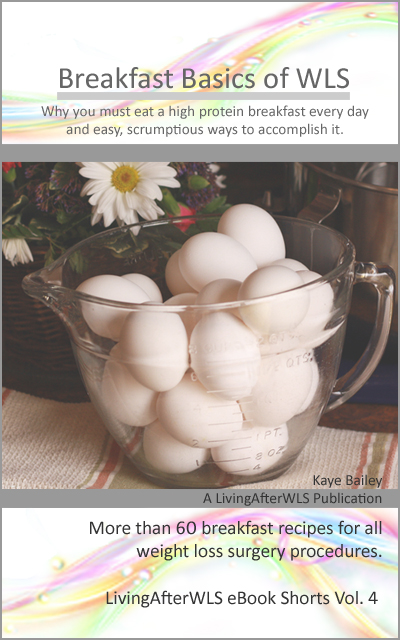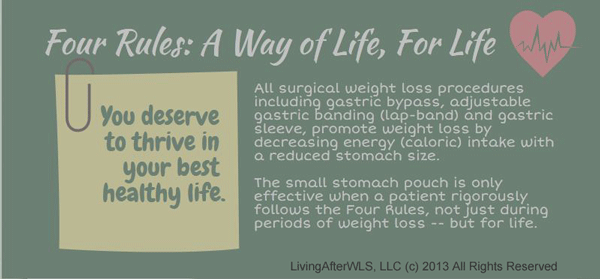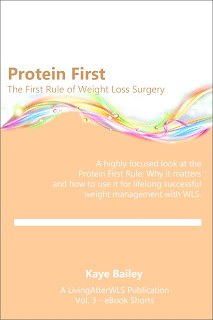"Rule #2: No Snacking. Patients are discouraged from snacking which may impede weight loss and lead to weight gain. Specifically, patients are forbidden to partake of traditional processed carbohydrate snacks, such as chips, crackers, baked goods, and sweets. Patients who return to snacking on empty calorie non-nutritional food defeat the restrictive nature of the surgery and weight gain results. It is seemingly contradictory that the 5DPT allows snacking. High protein snacks are allowed because they keep the metabolism active, they satiate hunger, and they help relieve the symptoms of carbohydrate withdrawal."
Kaye Bailey ~ 5 Day Pouch Test Express Study Guidepage 12.
 |
| Pumpkin Pie Cheesecake Parfait |
For example in the summer when our raspberry bushes are heavy with berries I looked forward to an afternoon snack of raspberries and vanilla Greek yogurt. In knowing this was on my plate that day I avoided feelings of tedium or deprivation that so often come when maintaining a dietary program. The anticipation of the berries and creamy yogurt served to deflect other temptations.
Ready Reference: Dietary Protein: Quick List and Recipe Links
So much of our food psychology is looking forward to a meal or treat in association with an occasion. By providing a meal or treat to look forward to we acknowledge that core human desire to anticipate sustenance beyond the act of taking in nutrition. We provide opportunity to feed the psyche and soul as well as the biological necessity for nutrition. When I was obese I spent a great deal of time daydreaming about the next delicious meal or morsel I would eat. Now, with the help of weight loss surgery, I can still daydream about the next delicious food I'll eat but I must be more mindful of my choices so that they support the health goals to which I am committed in order to keep my obesity in remission. It is a matter or re-allocating those basic human behaviors in a manner that supports our greater goals. And by starting each day with a plan for one meal --one moment of reward and enjoyment-- we can easily harness those behaviors to benefit our health rather than contribute to our illness (obesity). Here are a few of my favorite look-forward-to morsels:
- Fruit and/or berries with dairy protein (yogurt, cheese, cottage cheese)
- Ready-to-eat shrimp and cocktail sauce
- Pickles with Cheddar cheese
- Avocado with chopped hard-cooked egg and diced tomato. Add salad greens or seasonal vegetables for a full meal. Article: The Avocado Advantage
- Turkey Roll-ups (Layer two turkey slices, smear with cream cheese and jelly, roll-up and refrigerate for a wonderful handy snack! Delicious beyond compare!)
- Cooking with Kaye favorite recipe: Light Fresh Turkey Salad
- Protein Pudding (Whisk together 1 package sugar-free instant pudding with 1 can ready-to-drink protein drink. Chill and enjoy. Use serving size recommendations on pudding mix).
- Seasonal Favorite: Heart Healthy Pumpkin Spice Protein Treats with our popular Pumpkin Spice Protein Mix. Link for our Newsletter and Recipes.
- Warm herbal tea or chilled ice tea infused with lemon, berries, fruit, herbs or other seasonal flavor boosters. Try this: Stomach Soothing Thirst Quenching Lemon Ginger Iced Green Tea
Further Reading: Evening Munchies: Slider Food Territory






















